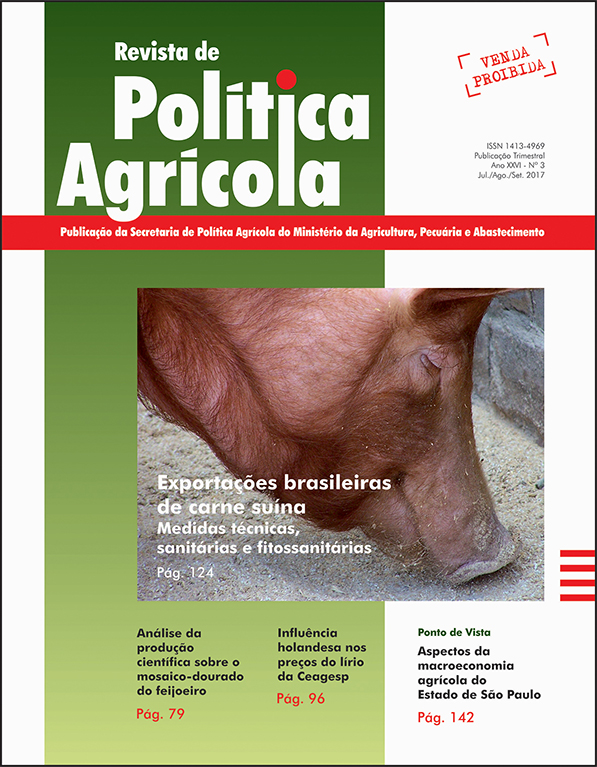Competitiveness of the Brazilian melon exports
Keywords:
international trade, Constant Market Share, phytosanitary defense policy, comparative advantagesAbstract
This study is aimed at analyzing the competitiveness of the melon exports from Ceará, Rio Grande do Norte, Bahia and Pernambuco, in the period from 2000 to 2015. The first two states make up the Pest Free Area of Anastrepha grandis, allowing the export of the fruit to quarentine-imposing countries, whereas the last two do not adopt such measure. In order to achieve that, it was used the revealed comparative advantage index and Vollrath’s revealed comparative advantage index. It was also used the Constant Market Share model in order to identify the sources of growth of the Brazilian melon exports, taking three subperiods into consideration: 2000/2007, 2008/2011 and 2012/2015. The indicators show that Ceará and Rio Grande do Norte have comparative advantages for melon, a result that was not observed for the states of Bahia and Pernambuco, with the exception of this last state for the first two years of the series. In addition, one may observe that the competitiveness and the growth of the world trade were, respectively, the effects which contributed the most when one compares the second subperiod with the first and the third with the second.Downloads
How to Cite
Santos, J. L. da S., & de Sousa, E. P. (2017). Competitiveness of the Brazilian melon exports. Revista De Política Agrícola, 26(3), 31–43. Retrieved from https://rpa.sede.embrapa.br/RPA/article/view/1297
Issue
Section
Artigos Científicos


